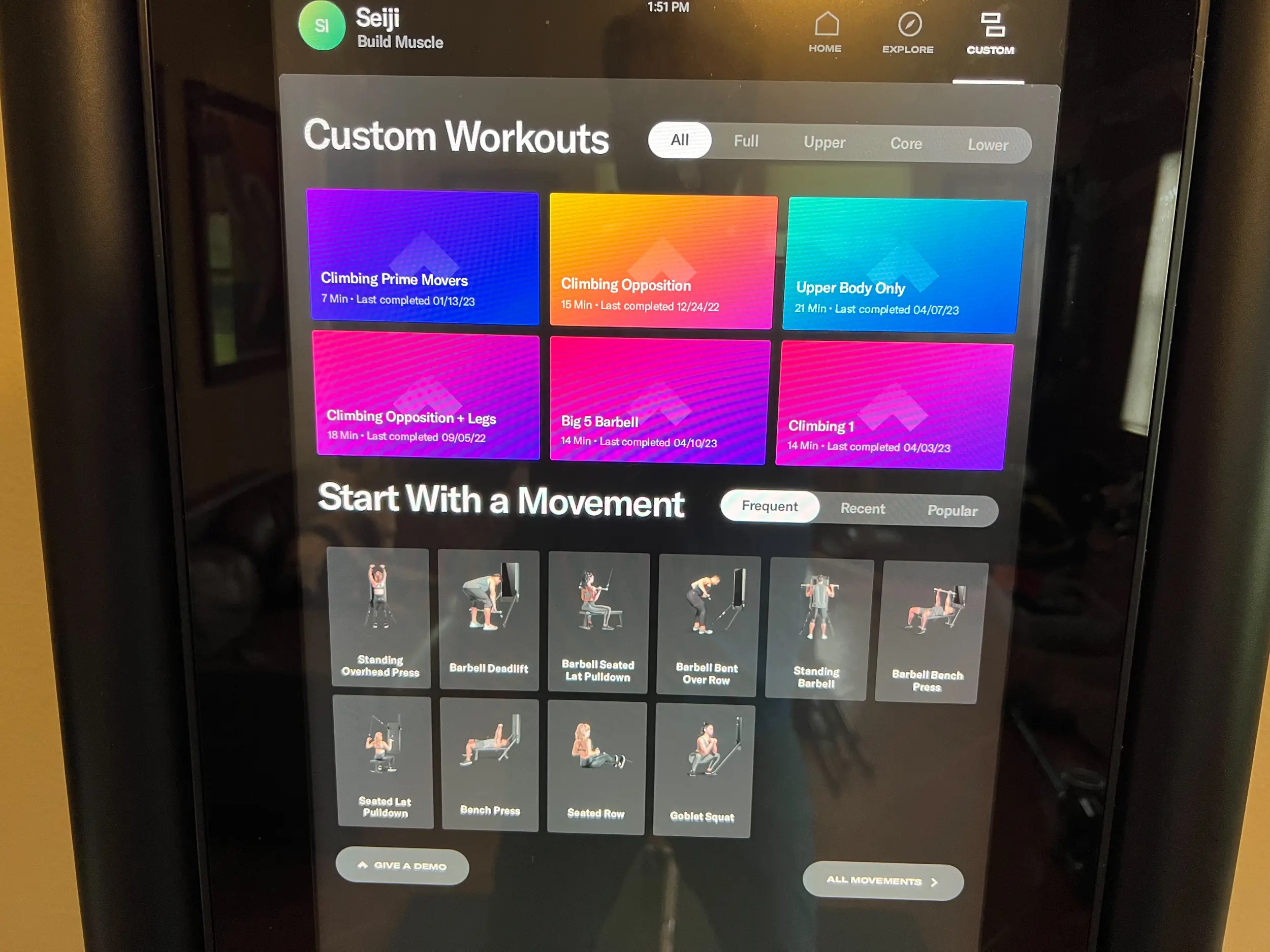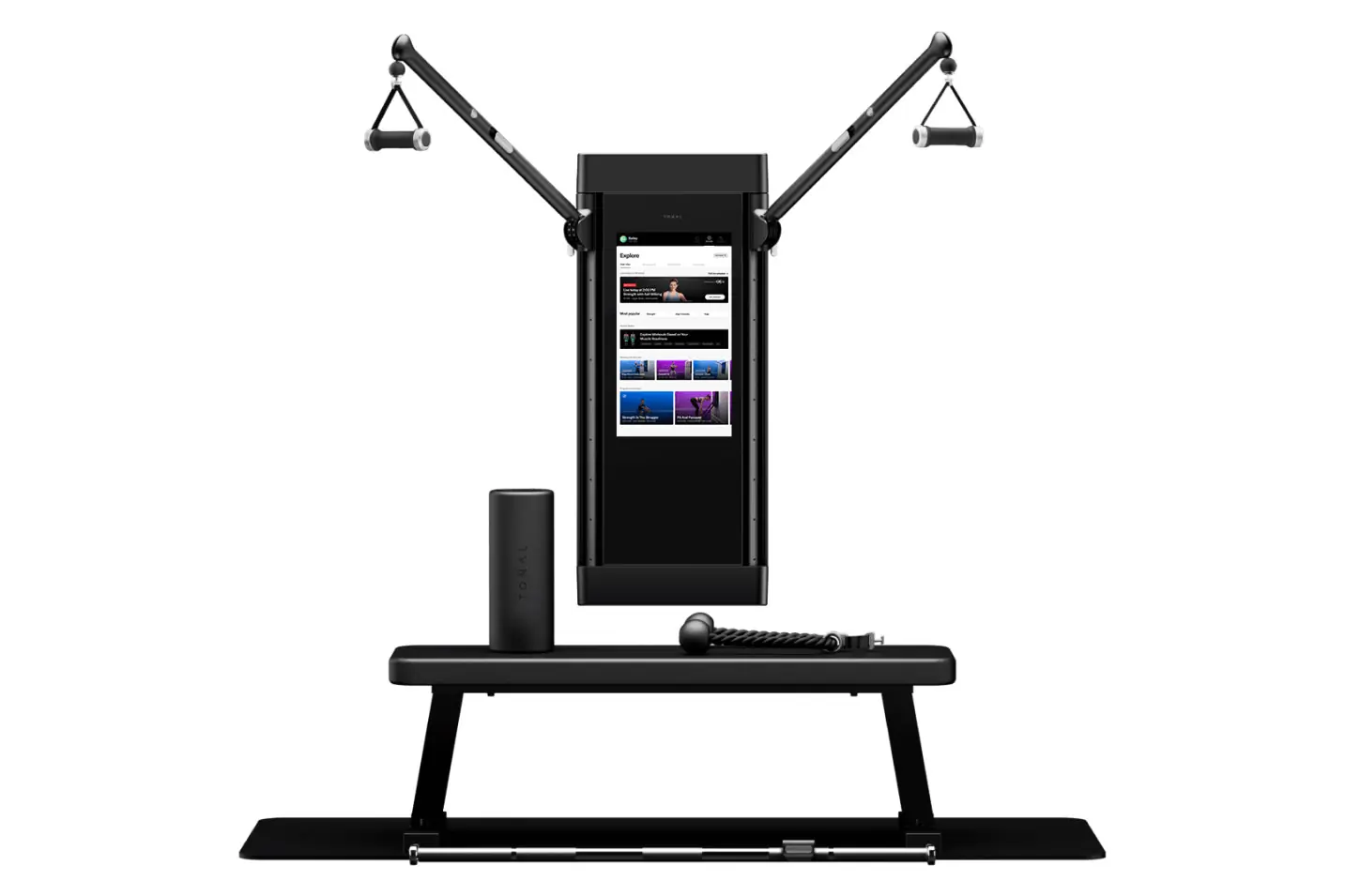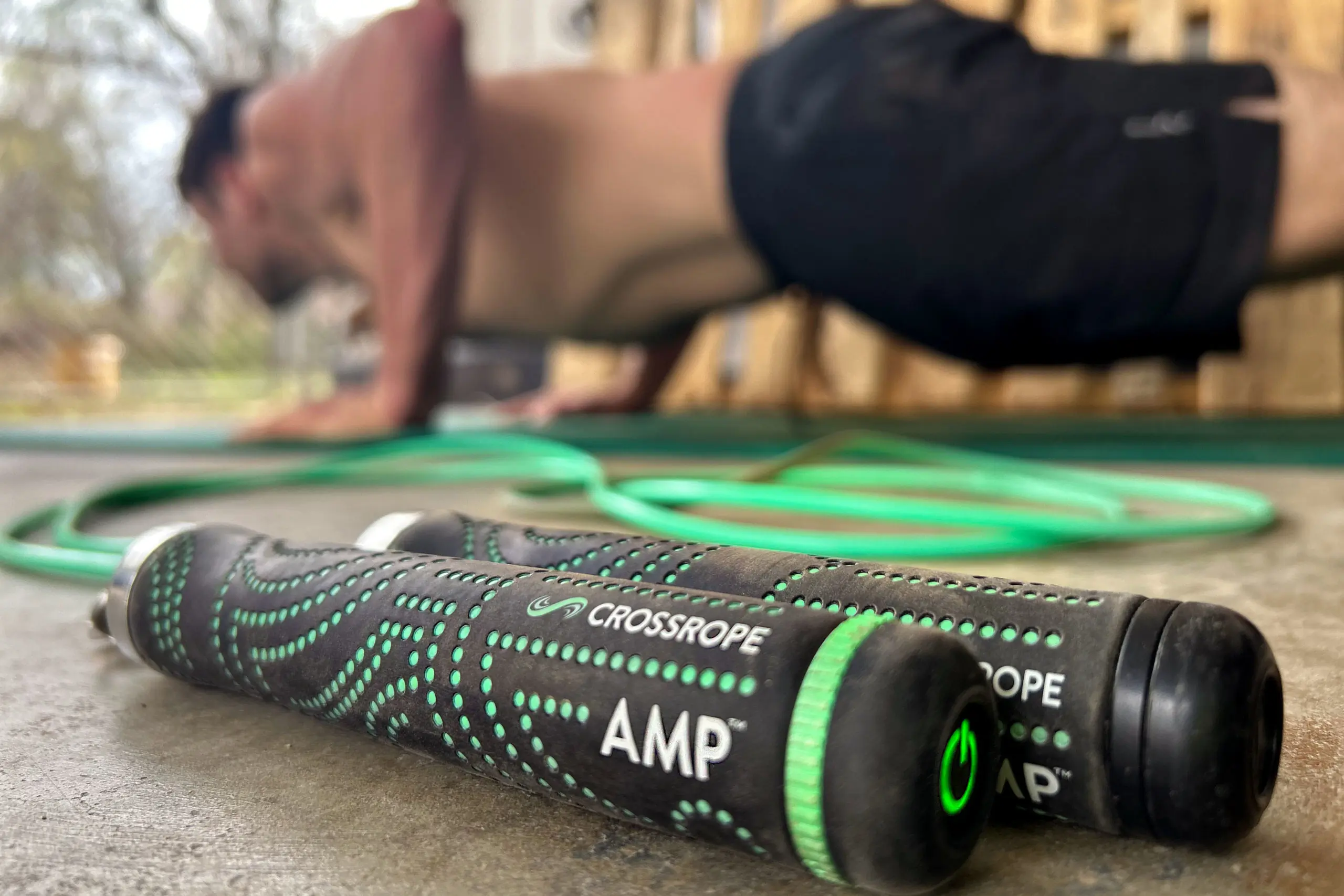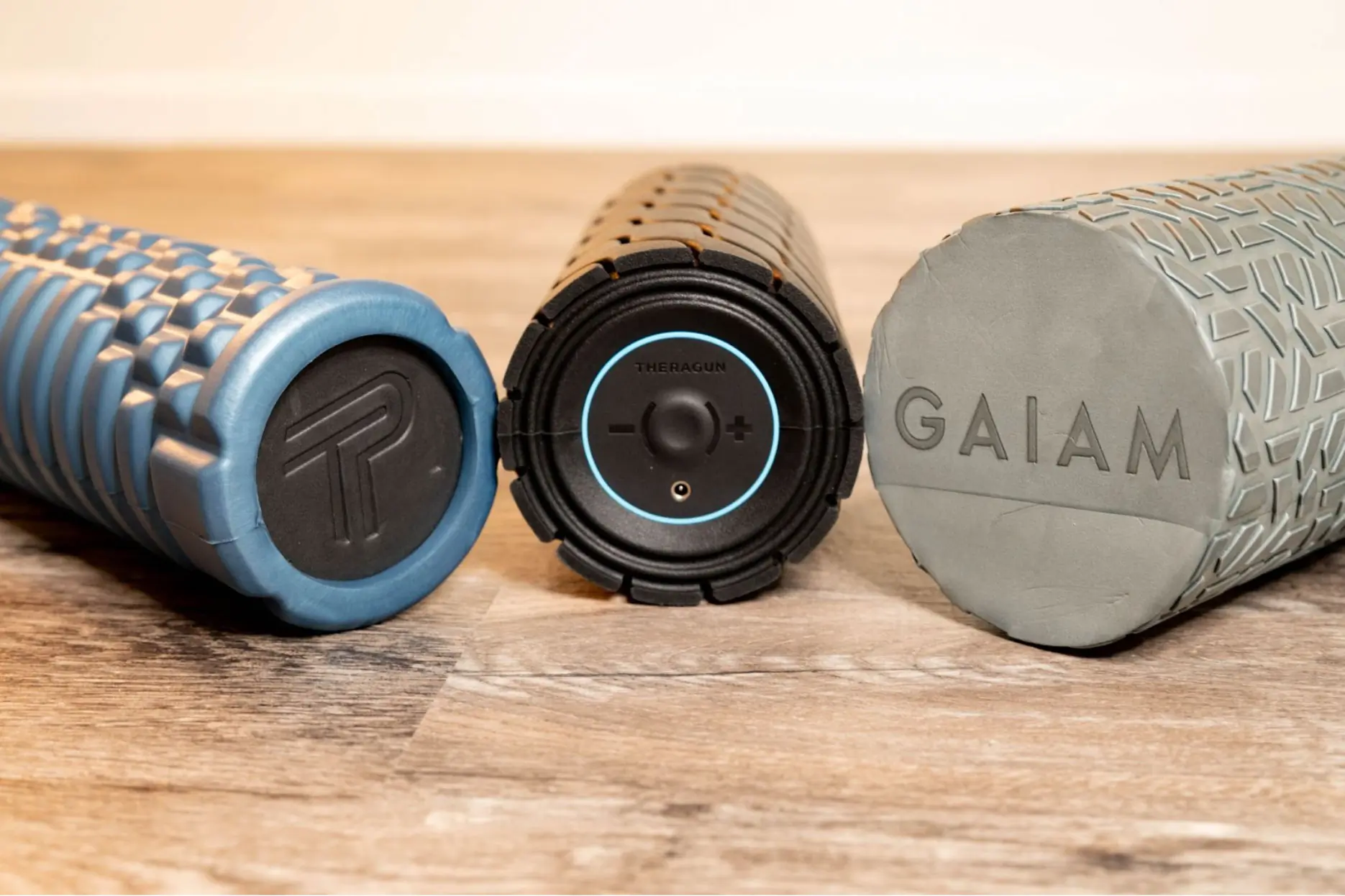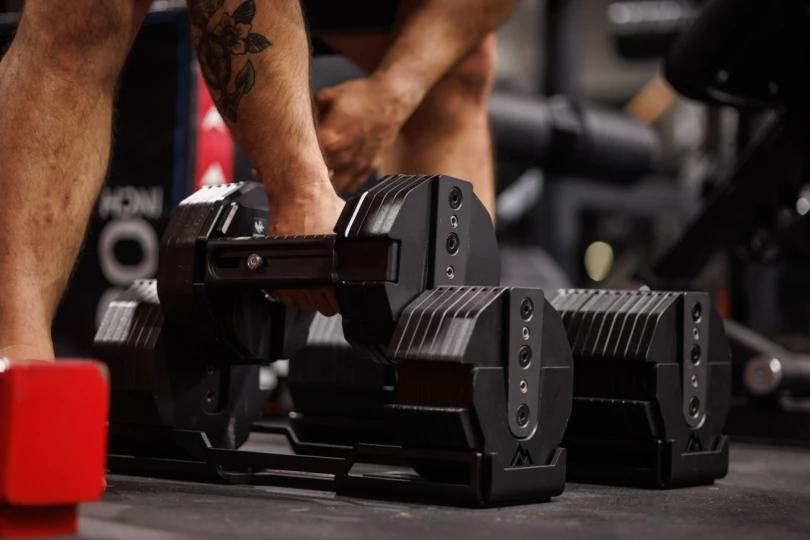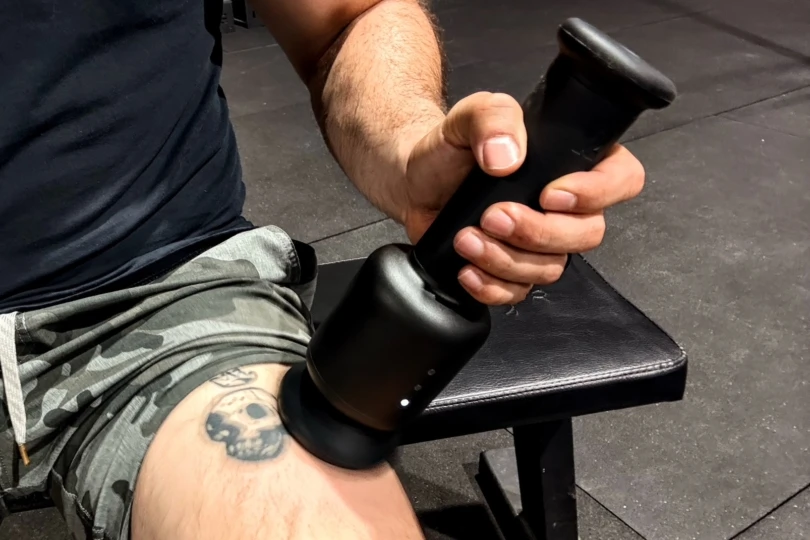I repeated this deep sentiment to a Tonal staffer, who quickly responded by arranging a test unit to be delivered to my home. He was short on words, but I took his immediate action as, “Prove me wrong.”
I used the Tonal at least twice a week for an entire year for this review. I targeted my strength training to climbing goals where the cost of failure was high. My goal was to pick the system apart, and I assumed I would quickly revert to my barbells, dumbbells, kettlebells, and bumper plates. I was sure the Tonal would amount to high-tech and expensive gadgetry that didn’t add anything to my program.
In short: The Tonal crammed my proverbial foot in my mouth, and for many, it can serve as an incredibly efficient, effective, and convenient strength training device. There are caveats, limited to power development, which isn’t a goal for all.
- Resistance: Electromagnetic
- Required Accessories: Smart Handles and Bar
- Mounting Requirements: standard outlet, studs and ceiling height, 7' x 7' centered space in front
Pros
- Enhanced safety compared to free weights
- Digital weight with Smart Flex requires more effort, stability, and focus
- Unobtrusive form factor for being so comprehensive
- Lifting modes add challenge, dimension and safety
Cons
- Expensive
- Permanent mount
What Is a Tonal?
It is difficult to describe what the Tonal is briefly. If you are familiar with commercial gym equipment, the closest facsimile is that it’s a functional trainer that uses computer-controlled, Wi-Fi-enabled electromagnetic resistance. Its flat profile allows it to be mounted to an internal wall, and the large touchscreen provides visual and audible form cues and instruction.
Arms that rotate and adjust in all planes position cables that attach to Bluetooth-enabled handles, bars, and other accessories. Exercises can be done standing, kneeling, lying on a bench, or in any other position in front of the unit.
The 20 x 11.5-inch touchscreen display shows proper form via videos, and visual and audible cues warn about straying from proper form or speed of movement. Using a smartphone in combination with the Tonal provides real-time visual feedback of user form from the side.
Tonal requires membership for the first year of use. This provides many of the benefits of the unit, and I don’t think continuing without a membership is effective for most.
The Tonal Purchasing Process and Space Requirements
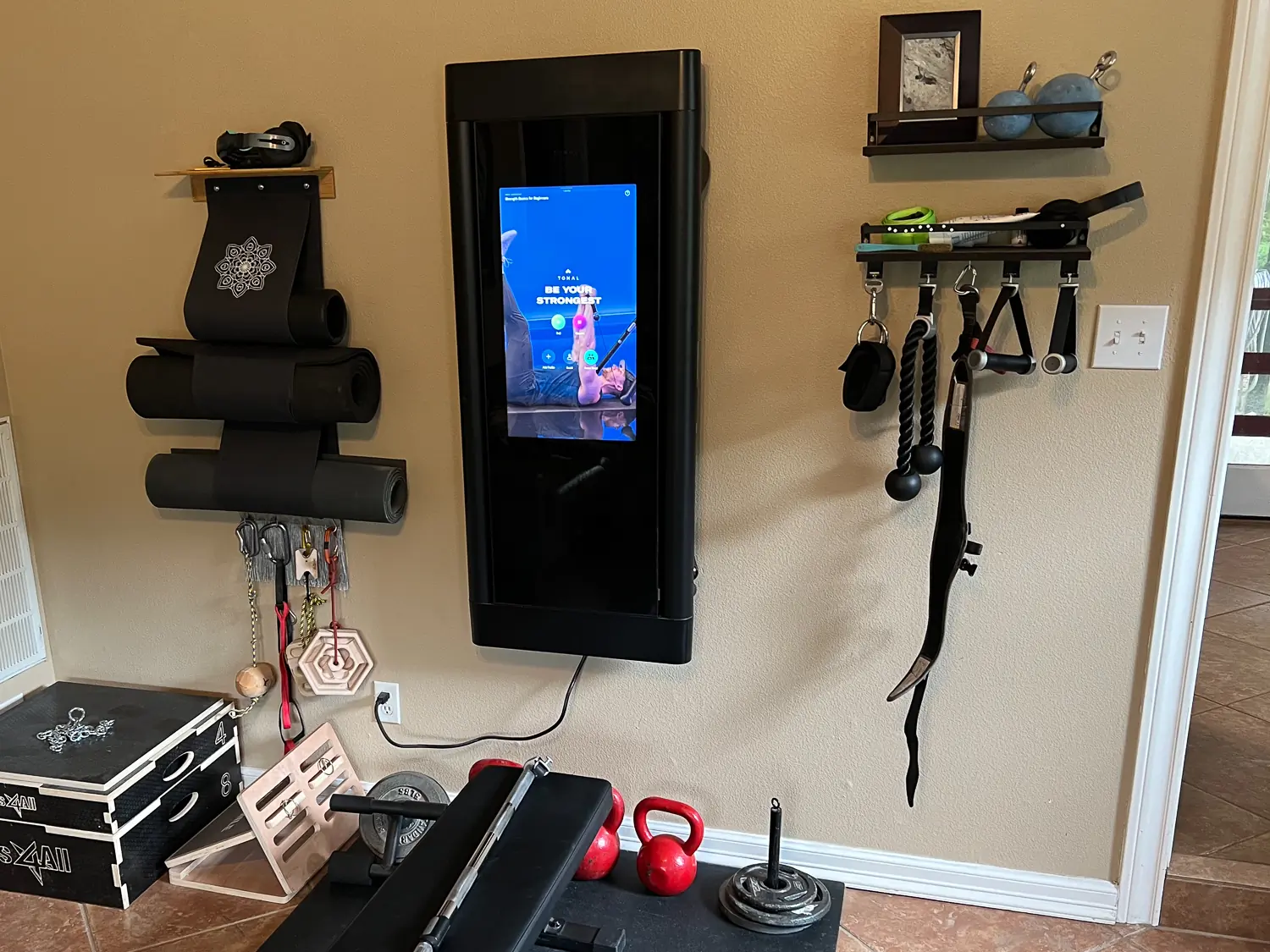
Once my Tonal order was in place, a volley of prompt email exchanges commenced. The first step was to qualify my installation area. The requirements were access to Wi-Fi that can stream audio and video, a minimum ceiling height of 7’10”, a 7 x 7-foot centered space in front of the proposed mounting point, and an outlet no more than 6 feet away. The studs needed to be wood or sheet metal, at least 2×4 inches, with 16- to 24-inch spacing. I also had to submit an image of my proposed Tonal location and have a backup location.
Tonal quoted a 6- to 8-week waiting period, but my unit arrived in 4 weeks. I scheduled the installation at my convenience, and two installers carefully mounted the unit at my location of choice. The entire process took less than 30 minutes.
I was impressed with the build quality of the Tonal. Again, being negative about fitness gadgetry, I assumed that if they could use plastic, they would. But anything on the Tonal that has to take any force, including adjustment levers, is metal. The arms articulated smoothly, and nothing had a “cheap” feel.
5 Pounds Is 5 Pounds. Or Is It?
Tonal calls its electromagnetic resistance “digital weight.” It was indeed a unique experience to feel this manufactured resistance.
Up until the Tonal, my resistance training for both performance and therapy has been based on fixing the load (isotonic), the speed of contraction (isokinetic), or the muscle fiber length (isometric). The Tonal controls both the load and the speed. And according to the brand, this unique resistance is more effective than other resistance loads.
Ranges within any movement are biomechanically more or less efficient. Think of a bicep curl; the most disadvantaged position is when the elbow is at 90 degrees. The load used is set around this weak point in free weight lifting.
Tonal’s “Smart Flex” function manipulates the load, so it’s relatively higher when there is a biomechanical advantage and lowers it when there is a disadvantage. In the bicep curl example, the Tonal adjusts the load so it’s higher both before and after reaching 90 degrees at the elbow. The load isn’t static nor limited to this weak point.
Another difference between Tonal’s digital weight and free weight is the lack of momentum. Managing momentum is prominent in Olympic lifting and kettlebell exercises.
Safety and Lifting Modes
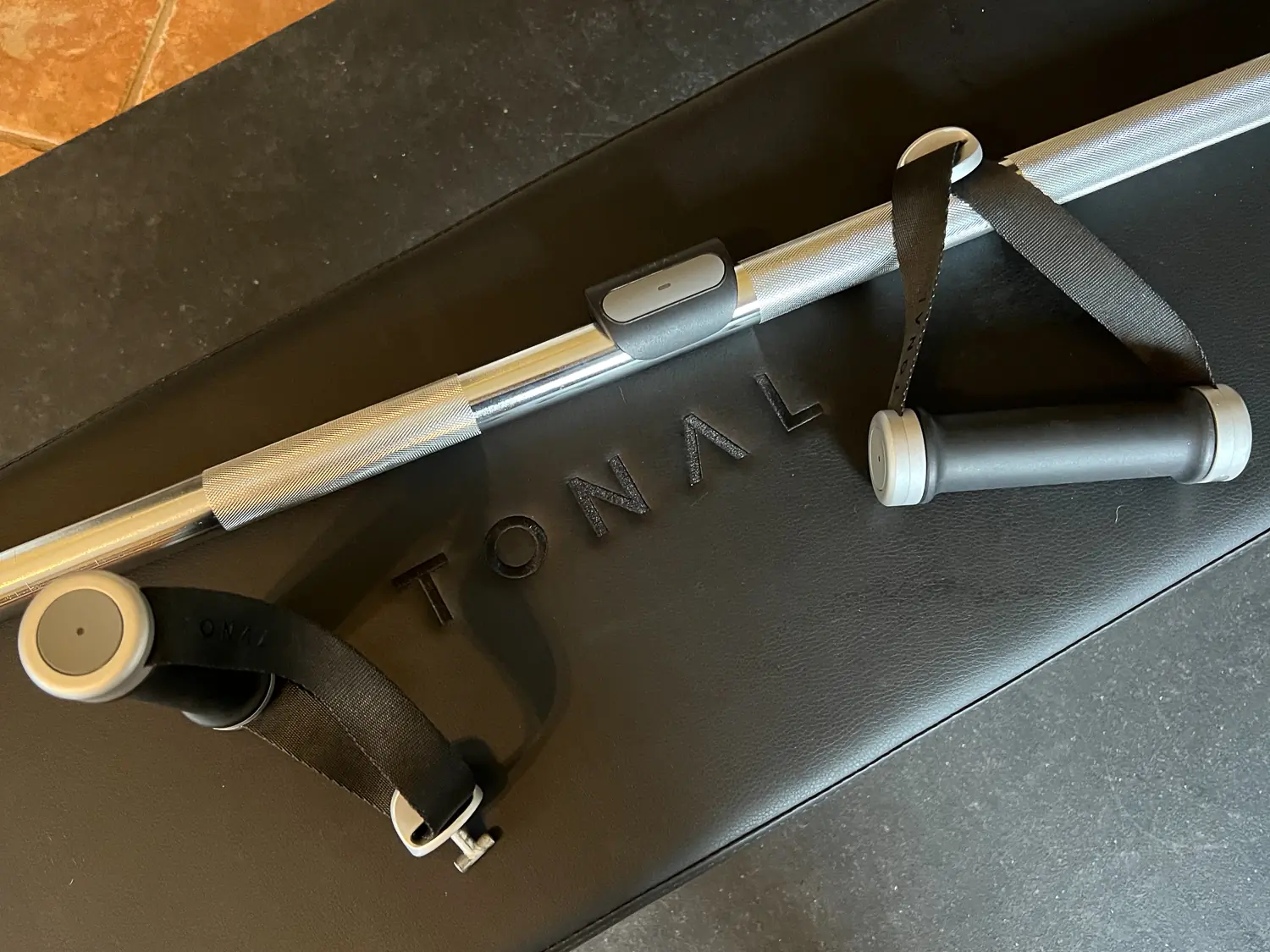



Not only does the electromagnetic resistance provide a unique load, but it also provides features that increase safety and potential effectiveness.
Safety and Adjustability of Digital Weight
First off, the handles and barbells have buttons that toggle the load on and off. So, at any point in a movement, pressing a button fully unloads the system. That in itself is a huge safety improvement over free weights.
So is the fact that there are no iron plates and that the system monitors movement. If the Tonal senses trouble, it can disengage the resistance, and the only things potentially falling are the handles or bar.
The Tonal also adjusts the load in 1-pound increments as strength improves. Starting from a simple movement screen, the Tonal AI predicts the starting load for each exercise and gradually progresses the user’s load as strength and skill improve. No more potentially injurious guesswork and time spent juggling plates, dumbbells, or pins.
Tonal Lifting Modes
There is a “Spotter Mode,” which does exactly what it sounds like it would do. When it senses struggle under the load, it temporarily eases up so the user can finish that rep without getting out of from. If the next rep starts with the prior speed of movement, it reestablishes the load.
Tonal also has a “Burnout Mode,” which is the digital version of the classic drop set. When the Tonal senses fatigue during a set (due to movement velocity), it reduces the load so the user can complete the set, reaching total failure.
There is also a “Chains” mode, mimicking the use of chains to increase load at certain points of motion. For those unfamiliar, picture hanging a heavy chain on each end of a barbell during a back squat. As the lifter lowers, the load decreases as the length of the chain accumulates on the floor and increases when the lifter ascends.
Lastly, an “Eccentric” mode can increase the load by 60% for the negative, eccentric phase of motion. Muscles can tolerate more load when they are elongating, and this mode takes advantage of that for potential gains. The back squat’s eccentric (or negative) phase is the descent to the bottom position.
A Trainer and Spotter on Your Wall
The Tonal audiovisual system and electromagnetic resistance were definitely engaging, even for a self-motivated, “no-frills” gym lifer like myself.
The Trainer
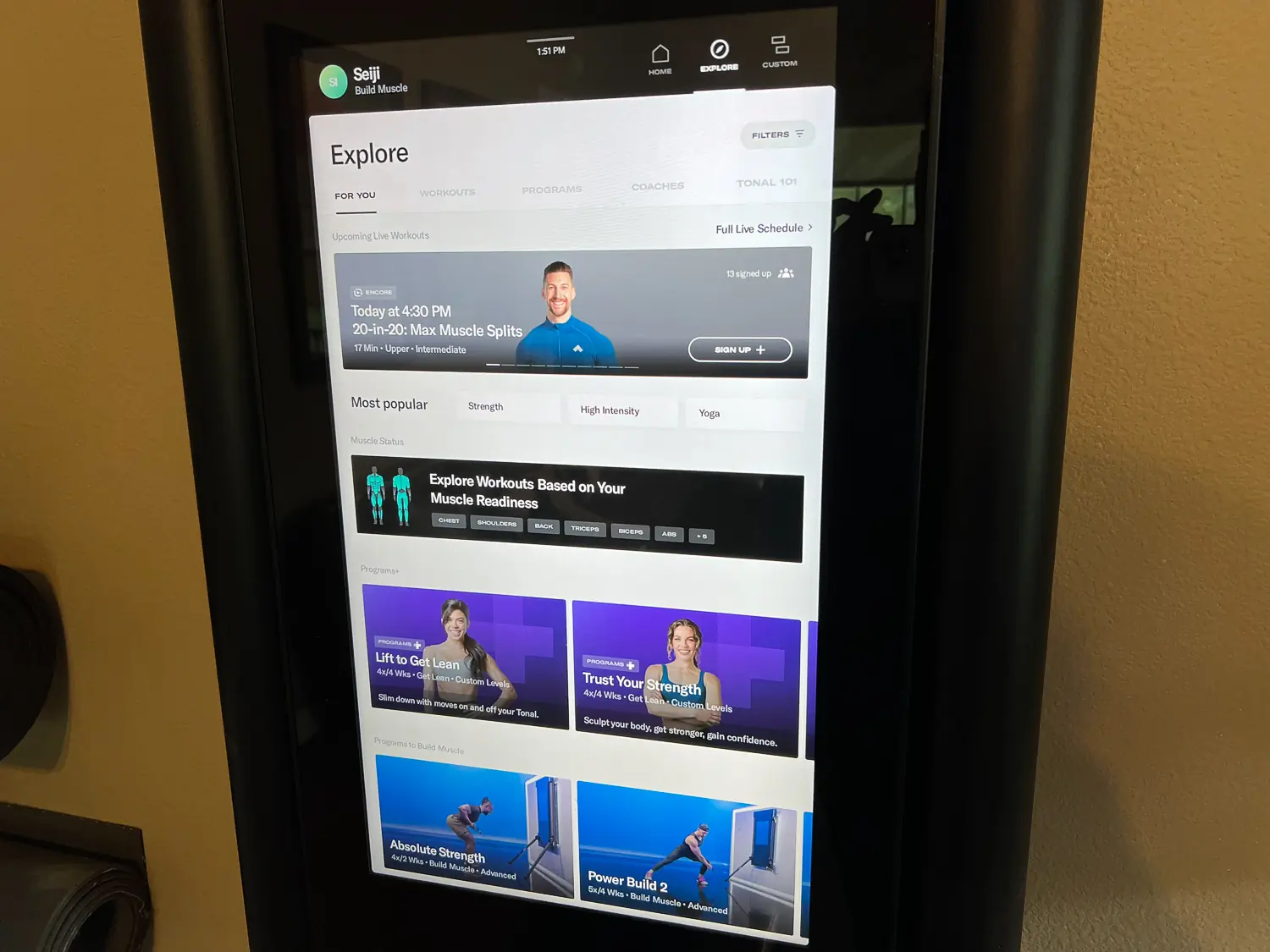



The Tonal membership, which the brand requires for the first 12 months, provides a myriad of guided workouts and classes. The breadth of offerings is impressive, covering general fitness to sports-specific performance and everything in between. There are Pilates workouts, boxing, golf, yoga, and even barre. I used the Tonal to prepare for specific objectives, so I didn’t sample these guided workouts.
But, I used the Tonal Smart View feature and found it extremely useful; it was like a personal trainer that took no BS. Smart View uses the phone camera as another set of eyes. It broadcasts a side view to the Tonal, which uses the video feed to cue form corrections and provides a real-time view of the user’s movement.
I thought this visual feedback and corrective cues provided a main purpose of a personal trainer. I could later review this video feed with corrective cues on the Tonal app to reinforce proper movement patterns. There was no getting around deviations in form with Smart View.
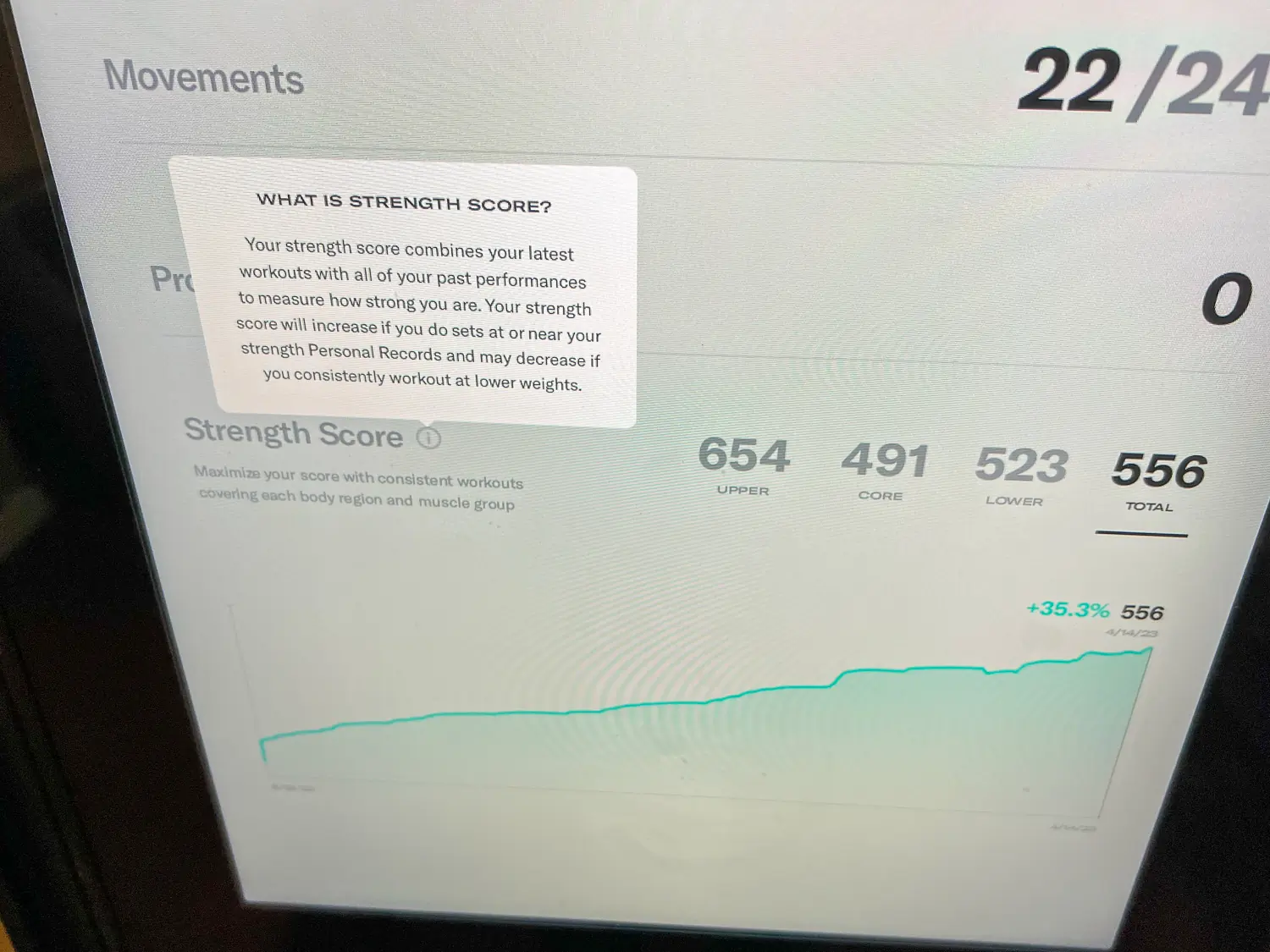



And like a good trainer, the Tonal provided metrics tracking on the screen and in the app to bolster motivation.
The Tonal app also provided a convenient way to program custom workouts. I could arrange exercises in blocks with whatever configuration I desired. The app sent the programming to the Tonal, which kept me progressing through the workout. Programming is also possible directly on the unit’s touchscreen.
The Spotter
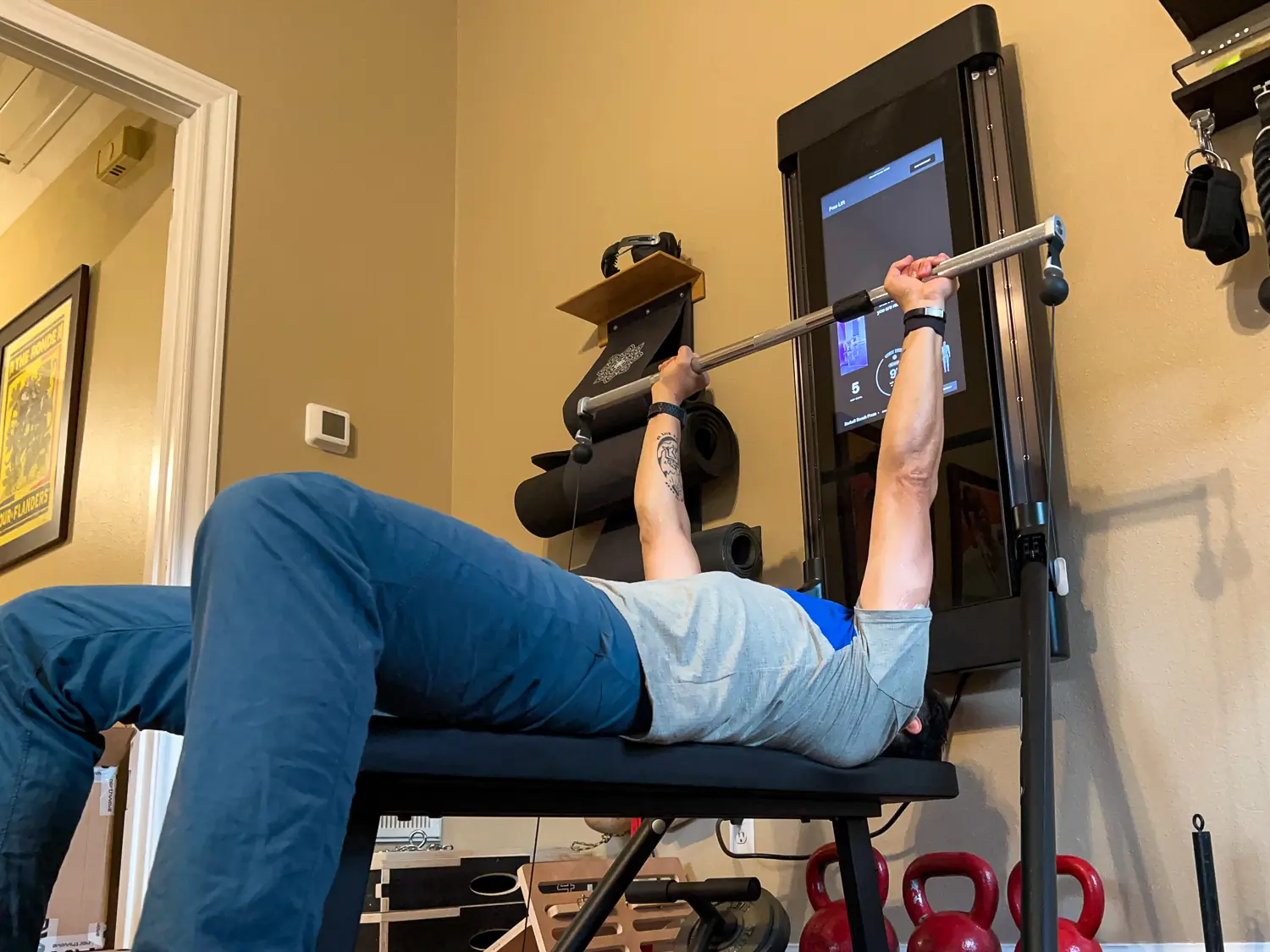



I usually used Spotter Mode and Smart Flex. The digital weight and Smart Flex felt unnatural at first, but within a few sets, I adjusted and began to understand how it could be more effective.
Without momentum and a static load, I couldn’t “float” portions of movements using power and momentum. I had to consciously keep my physical effort and mental focus throughout the movement, especially at the endpoints and during the negative phase (“lowering” the weight). I used more energy, concentration, and subjective effort for each rep.
The Spotter Mode allowed me to maintain form when approaching failure by reducing the load, which preserved the quality of movement and safety, just like a human spotter giving a touch of assistance during the “sticky” range of motion. But at times, the spotter was out to lunch. If I couldn’t start the next rep, assistance never arrived on certain exercises, and I had to toggle the load off.
For example, if I failed to lift the bar off my chest during a bench press, the load wasn’t automatically removed, even after a long pause. I had to turn it off myself, and sometimes reaching the button in that awkward position was difficult. I imagine this will get better through software updates.
The Burnout mode was like having two spotters. Efficient drop sets in the gym can require two helpers; one on each end of the barbell to remove plates and collars or one on each dumbbell. And the increments of load reduction can only be so precise and depend on the plates or dumbbells available.
But the digital load can change in 1-pound increments, and the Burnout Mode reliably produced the desired effect. No more running around, flinging plates!
The Big Caveats
All the technology in the Tonal was impressive, but it wasn’t the end all, be all. It does not provide resistance in a natural way, in the way your body would address it in the real world. Momentum exists, the loads are constant “out there,” and the Tonal modifies both.
But Tonal presents studies that suggest this digital weight is more effective for raw strength development, and based on my perceived exertion, I agree. I felt that the lack of momentum and Smart Flex kept my muscles and the nervous system fully engaged for the entire movement; there was no “free ride.” So I subjectively felt that I was making the most out of every repetition in terms of pure strength development.
But one area of strength where the Tonal isn’t ideal is power development, something that is important for real-world sports and activities. Power is strength applied with velocity — quickness, snap, speed. For many explosive movements, with loads set low enough to allow an adequate speed of movement, the Tonal didn’t “spool up” fast enough.
This meant the load wasn’t applied to the body and allowed slack to build in the cables, forcing a pause before reversing direction. And the cables made some ballistic movements logistically difficult or impossible. This is a shortfall for athletes training for high-power objectives.
My Opinion on Tonal as a Professional Trainer
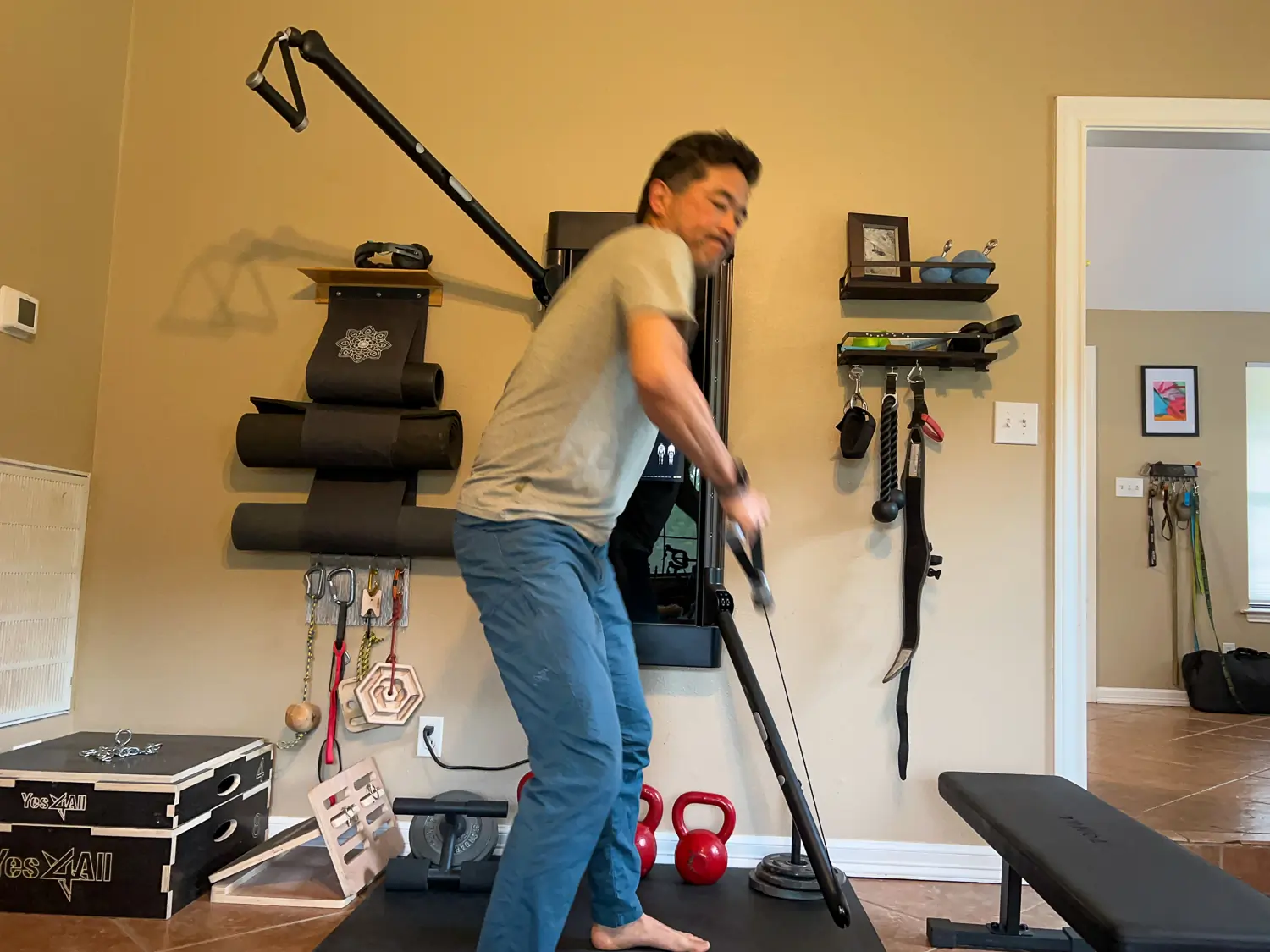



I’ve been a trainer for almost 30 years and spent 15 years training elite amateur and professional athletes, culminating in multiple national amateur and world championships. I have been confident in my methods, partly summarized as “no gimmicks, no shortcuts.”
I assumed the Tonal would be an expensive wall ornament for those who loved tech gadgets more than strength gains. The Tonal proved me wrong.
Efficiency
After a year of having the Tonal on my living room wall, I report that it’s there to stay. As I’ve become older, the constraints on my time to train have reduced to mere hours per week. Coming from decades of spending double-digit hours every week training makes every minute seem incredibly valuable. And the Tonal’s digital weight, Smart Flex, and Spotter Mode made the most of every repetition.
It’s hard to put into words how different, harder, and more efficient the digital weight feels. Initially, I scoffed at the published maximum load of 200 pounds, confident that I would exceed that in certain lifts. But I wasn’t even close.
The Tonal requires so much more effort than “standard” weight and way more engagement of stabilizing muscles. This was especially true at end ranges and during the eccentric phase of movements. I had to learn to let go of all my prior predictions based on standard metrics.
And my subjective feelings and personal data convinced me that I could get the same strength-building effect in four sets instead of five. Combining this with the time saved by not changing plates or swapping dumbbells made the Tonal the most effective way to gain pure strength I’ve ever tried.
Reduces Friction in Making Strength Training a Habit
But I think the real value is that the Tonal eliminated much of the friction that may prevent strength training from becoming a habit. It was constantly in view, but in an unobtrusive way, reminding me that it was there and ready. I didn’t have to change clothes or drive to the gym. It required so little auxiliary effort to start training, and the time commitment was so much less than it used to be.
For some, having the Tonal at home could eliminate the awkwardness or trepidation of going to a gym and working out in front of others. I know that fear of judgment is real for some, and the Tonal could extinguish that. For me, working out at home, with nobody but my dog and cat for company, was welcome solace.
There weren’t weights to rerack, and the music was always to my liking (Tonal integrates with Apple Music, and membership delivers music streams). Finally, I set the thermostat wherever I pleased and belted out power screams at will.
Conclusions on Tonal




I didn’t want to like the Tonal. But it won me over with the effectiveness of digital weight, time efficiency, and convenience. Almost every source of friction to strength training disappeared when the Tonal staff mounted it to my wall. And for a fairly comprehensive strength training device, the form factor is unobtrusive.
For those strength training for pursuits that have a power component, it can be lacking. To keep a better option for training velocity, I have elected to keep my barbell, bumper plates, and kettlebells. But for many, executing the target activity or sport adequately addresses this strength component. And again, for many, strength development is part of a wellness or healthspan program, where the Tonal fills the bill.
I have seen, tried, and filled my own businesses with so many fitness devices and weight machines. And against my nature, entrenched thoughts on training, and experiences, I say that the Tonal is one of the best tools ever devised for personal strength training, with the noted caveats.
It is not a trivial investment. The Tonal itself is $3,995, and the accessories (handles, bar, pull rope, bench, roller, mat) are an additional $495, and the handles and bar are must-haves to toggle the load. Membership is $60 a month for the household, and I feel that most wouldn’t get nearly as much out of a Tonal without it.
Tonal does offer interest-free payment plans as low as $84 a month, which rivals gym memberships. But yes, it’s still a chunk of change. For me, it has more than paid for itself to me in saving time and ease of use, and after a year, it’s just as solid as it was the day it was installed. I predict the Tonal will last a long time under heavy use.
